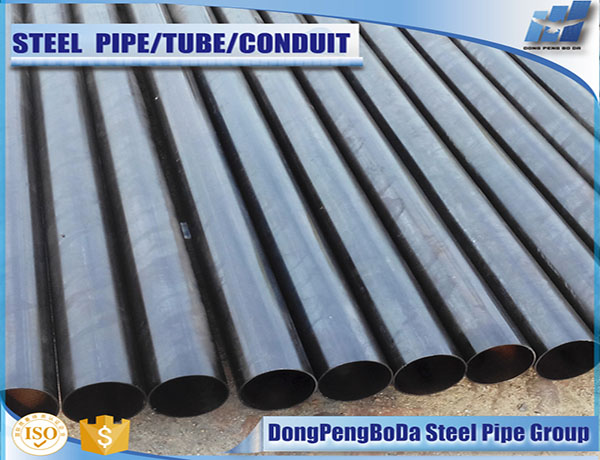Types of Metal Finishing
Definition of “Metal Finishing”
Metal finishing is the process of changing the surface of a steel product, for the purpose of improving its appearance and/or durability. Metal finishing is related to electro plating, which is the production of a thin surface coating of the metal upon another by electrode position. When it comes to steel pipe in the current market, surface finishing is a broad range of industrial processes that alter the surface of a manufactured item to achieve a certain property.

Finishing processes may be employed to: improve appearance, adhesion or wettability, solderability, corrosion resistance, tarnish resistance, chemical resistance, wear resistance, hardness, modify electrical conductivity, remove burrs and other surface flaws, as well as control the surface friction. In a few cases, some other steel pipe coatings can also be used to restore original dimensions to salvage or repair an item. An unfinished surface is often called mill finish.
Metal finishing is used to treat the exterior of a metal product by applying a thin complementary layer to its surface. There are numerous types of metal finishing processes that can be used for a variety of purposes. In this guide, we will review the major finishing methods, as well as applications and considerations for choosing a metal finishing process. Some of the general advantages of applying this finishing treatment to a metal product include:
Increased durability
Improved decorative appeal
Enhanced electrical conductivity
Higher electrical resistance
Higher chemical resistance
Higher tarnish resistance
Potential for vulcanization
Metal Plating
Metal plating machines use a chemical bath to coat or alter the surface of a substrate with a thin layer of metal, such as nickel or PTFE. The electroplating method generates an electric current to coat the substrate, while electroless plating employs an autocatalytic process in which the substrate catalyzes the reaction.
Metal plating provides a number of advantages as a finishing process. It can improve a product’s durability, corrosion resistance, surface friction, and exterior appearance. It is also a useful option for coating other metals. In high-volume production runs, a barrel-finishing machine is a fast and efficient plating solution. However, plating machines are generally not suited for smoothing out surface defects.
Brushed Metal
Unlike plating, brushed metal finishing is an effective method for removing surface imperfections. These finishing machines create a uniform, parallel grain surface texture to smooth out a product’s exterior. An abrasive belt or wire brush is usually employed to achieve this effect. In addition, the singular direction of the belt or brush can create slightly rounded edges perpendicular to the grain.
Buff Polishing
If your project requires a smooth, non-textured finish, then a buff polishing machine may be your answer. This machine uses a cloth wheel to buff the product’s surface, resulting in a high, glossy sheen. The process is often used for decorative products that benefit from luster and smoothness.
Buff polishing machines tend to round out a product’s edges, and due to the cloth wheel’s range limits, the process is less effective for applications requiring intricate, fragile, or recessed features.
Metal Vibratory Finishing
Vibratory finishing machines are used to deburr products and remove sharp edges. They position material inside a drum filled with abrasive pellets and a substrate, then apply tumbling vibration to create a uniform random texture. The machine’s cycle speed and magnitude of vibration are usually variable, allowing effective treatment for a range of small- to large-sized parts.
Sand Blasting
Sand-blasting machines are typically employed in projects requiring a uniform matte texture. The process (also known as beadblasting) forces sand, steel shots, metal pellets or other abrasives into a substrate at high speed. This results in a smooth, clean product texture, particularly in soft metals.
Powder Coating
Powder coating applies a decorative finish that is similar to paint, but with greater durability. The process involves melting dry plastic powder onto the metal to produce a textured, matte, or glossy coating. A textured powder-coating machine is also highly effective in removing surface defects.
For more information about methods of surface treatment for steel pipe, you can visit our official website or Contact Us any time.
Tel: +86 18202256900 Email: steel@tjdpbd.com
Previous: Metallic pipe joining









